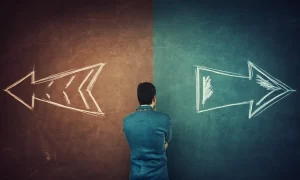 Ownership changes are critical moments in the life of any business. Whether due to the untimely death of an owner, the departure of a sole owner, or the exit of a co-owner in a multi-owner business, these transitions present unique challenges that require thoughtful planning. Effective continuity planning can help ensure that a business not only survives but thrives through these transitions.
Ownership changes are critical moments in the life of any business. Whether due to the untimely death of an owner, the departure of a sole owner, or the exit of a co-owner in a multi-owner business, these transitions present unique challenges that require thoughtful planning. Effective continuity planning can help ensure that a business not only survives but thrives through these transitions.
Continuity Planning Following the Death of an Owner
The sudden death of an owner can be a devastating event for any business, particularly for small to medium-sized enterprises (SMEs). Without a well-thought-out continuity plan, the business may face significant disruption, which could lead to operational paralysis, loss of key clients, and eventual closure. A few key considerations for this scenario include:
Succession Planning: One of the most critical components of a continuity plan in this scenario is a detailed succession plan. This plan should identify who will take over the owner’s responsibilities and how the transition will occur.
Business Continuity Instructions (BCI): BCIs provide the deceased owner’s family and key employees with a roadmap for managing the business in the immediate aftermath of the owner’s death. These instructions should include contact information for trusted advisors, detailed plans for continuing operations, and clear guidance on the eventual transfer of ownership.
Financial Considerations: Life insurance policies can provide the necessary funds to maintain operations, pay off debts, and support the transition to new ownership. These funds can also be used to finance a Stay Bonus Plan to retain key employees during the transition.
Continuity Planning for Owner Departure in a Sole Proprietorship
In sole proprietorships, the departure of the owner, whether due to retirement, sale of the business, or other reasons, poses a significant challenge. Unlike multi-owner businesses, there is no one to automatically take over, making advance planning crucial. Important steps in this scenario include:
Identifying a Successor: For sole proprietors, it’s vital to identify and prepare a successor well before departure. This could be a family member, a key employee, or an external buyer. The process of grooming a successor should involve training and gradually increasing their responsibilities to ensure they are ready to take over when the time comes.
Business Valuation: Regular business valuation is essential to ensure that the owner receives fair compensation upon exiting the business. An accurate valuation also helps potential successors or buyers understand the financial health of the business and its growth prospects.
Transition Planning: A comprehensive transition plan should outline the steps for transferring ownership, including legal and financial considerations. This plan should be shared with all stakeholders to ensure a smooth handover and to minimize disruption to business operations.
Continuity Planning for Departure of One Owner in a Co-Owned Business
In businesses with multiple owners, the departure of one owner can create tension and uncertainty, particularly if the remaining owners are unprepared. A well-drafted Buy-Sell Agreement is essential in these situations to govern the transition and ensure fairness to all parties.
Buy-Sell Agreement: This agreement should clearly define the terms under which an owner can exit the business, including how their share will be valued and purchased by the remaining owners. The agreement should also outline the payment terms and any financing arrangements necessary to complete the buyout.
Valuation Methods: The Buy-Sell Agreement should specify an independent and fair valuation method for the departing owner’s share of the business. This helps prevent disputes and ensures that the process is transparent and equitable.
Impact on Business Operations: The departure of a co-owner may require a reassessment of the business’s strategic direction, particularly if the departing owner played a significant role in decision-making. It’s important for the remaining owners to communicate clearly with employees, clients, and other stakeholders to maintain confidence and stability during the transition.
Common Considerations
While each ownership transition scenario presents unique challenges, several common themes emerge:
Proactive Planning: Whether dealing with the death of an owner, the departure of a sole proprietor, or the exit of a co-owner, proactive planning is crucial. Waiting until a crisis occurs can lead to hasty decisions that may jeopardize the future of the business.
Legal and Financial Preparedness: In all scenarios, having the right legal and financial structures in place—such as succession plans, Buy-Sell Agreements, and life insurance policies—can mitigate risks and ensure a smoother transition.
Communication: Clear and consistent communication with all stakeholders is vital. Whether it’s sharing Business Continuity Instructions with family members or discussing the terms of a Buy-Sell Agreement with co-owners, transparency helps prevent misunderstandings and builds trust.
Ownership transitions are inevitable, but with the right continuity planning, businesses can navigate these changes successfully. By understanding the unique challenges of each scenario and taking proactive steps to address them, business owners and financial managers can ensure that their companies remain resilient and poised for continued success. Contact an exit planning consultant to develop a continuity plan that works for your individual business needs.
David Jean is the Director of Altus Exit Strategies and a Principal at Albin, Randall & Bennett, where he is also the Practice Leader of the Succession Planning, Business Advisory, and Construction & Real Estate Services Teams. David works with business owners who want to improve their business’s value before they sell through the Seven-Step Exit Planning Preparation™ process. He has worked with companies from $5 million to $50 million in revenue across a range of industries. He can be reached at djean@arbcpa.com.



